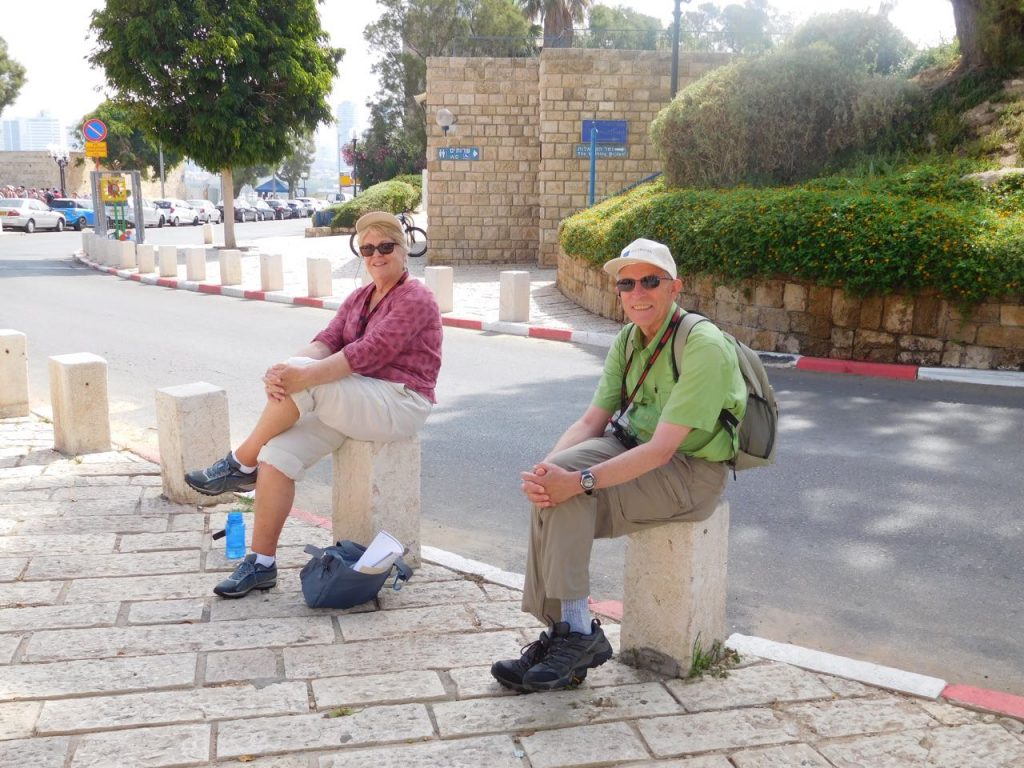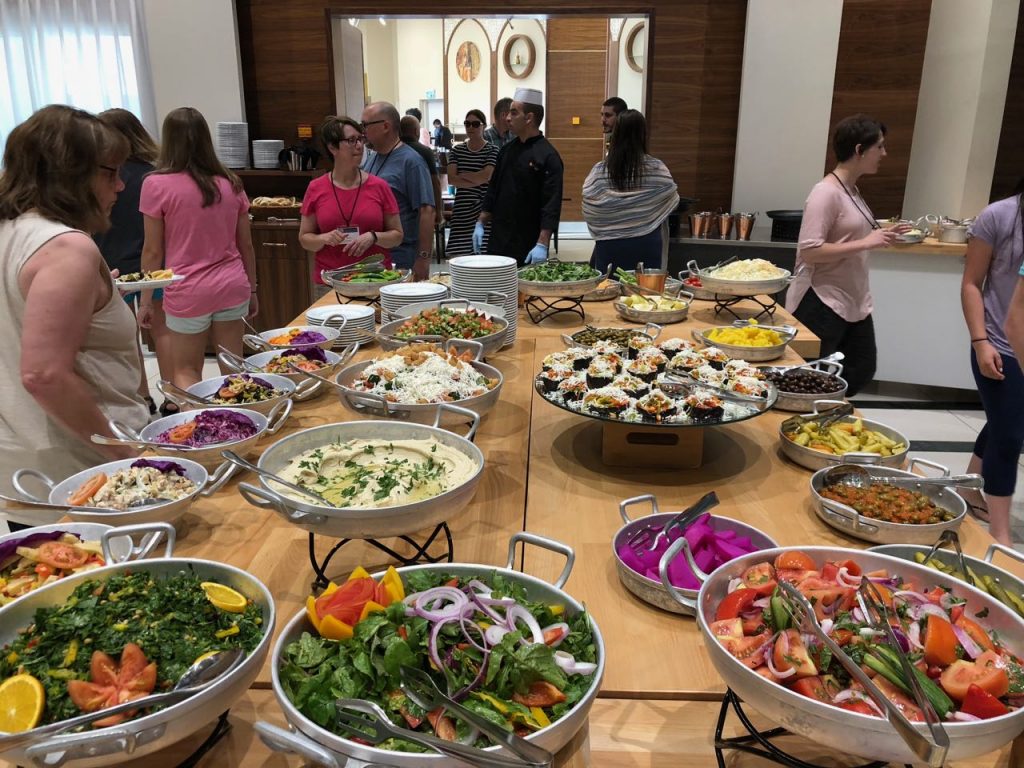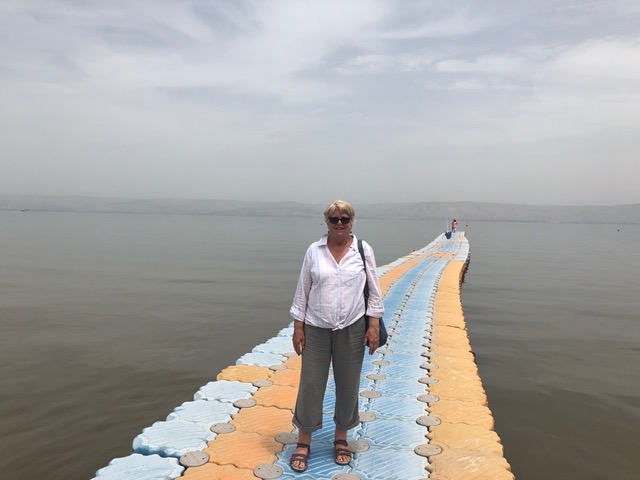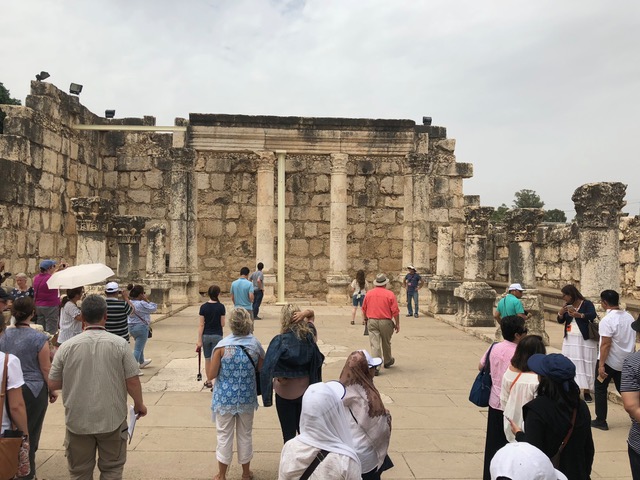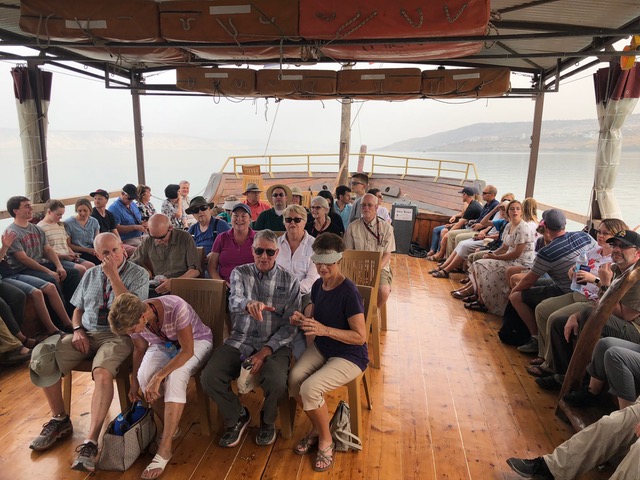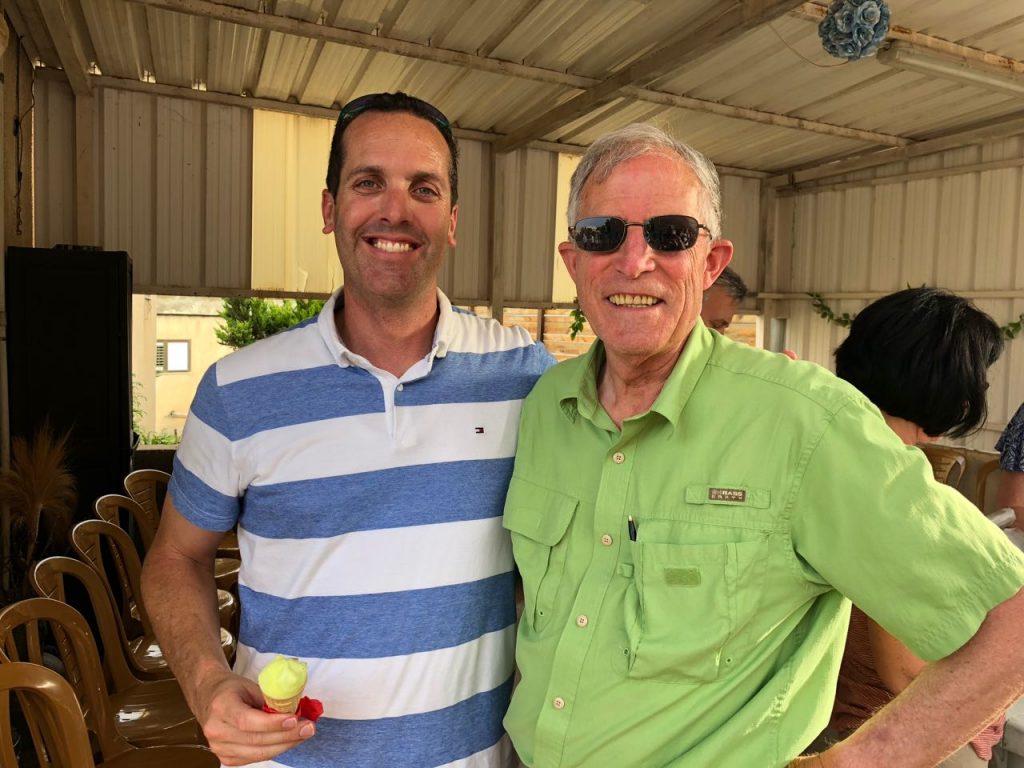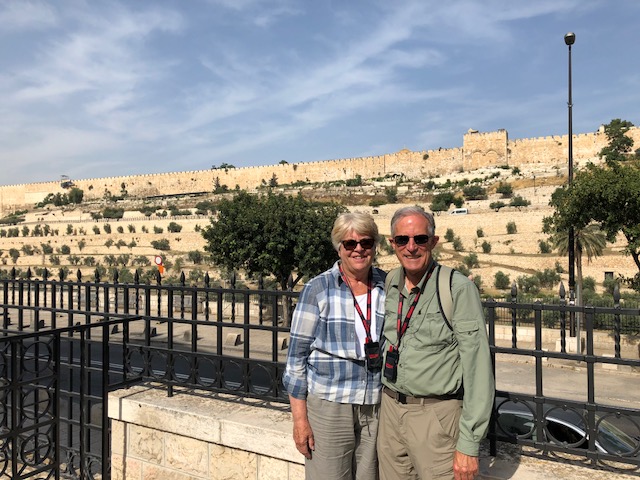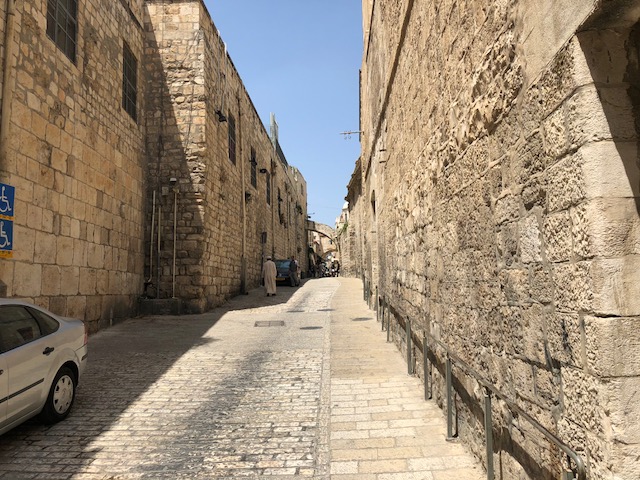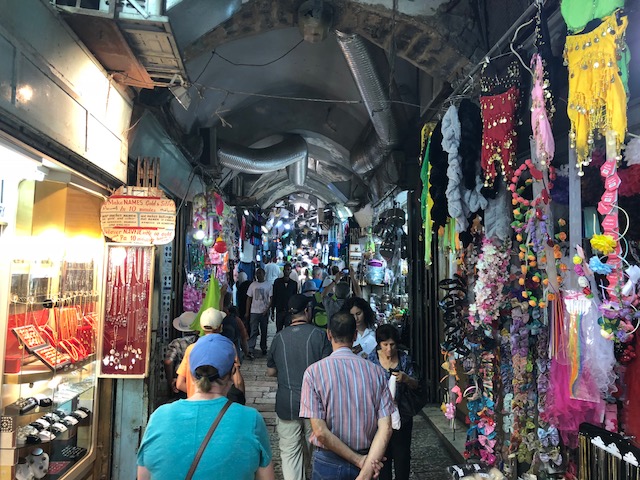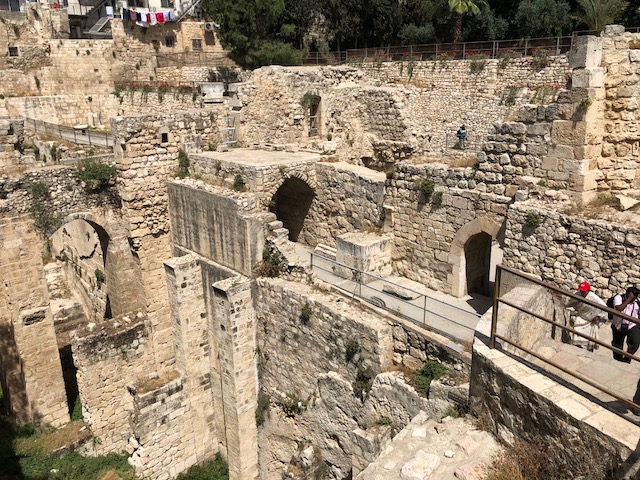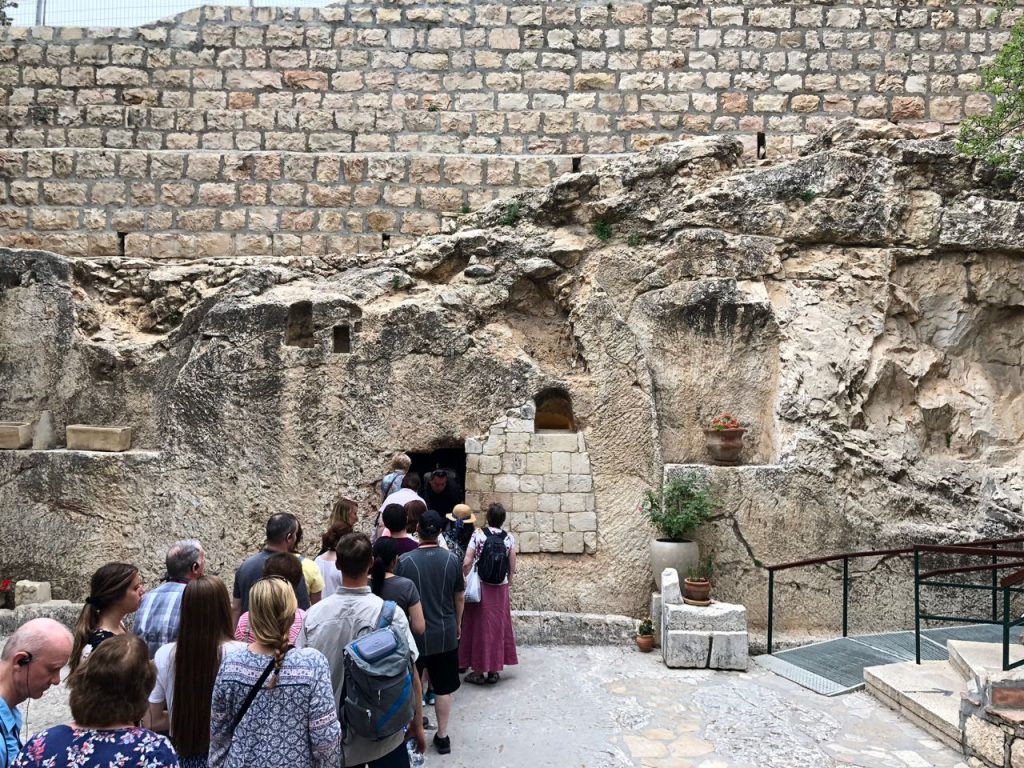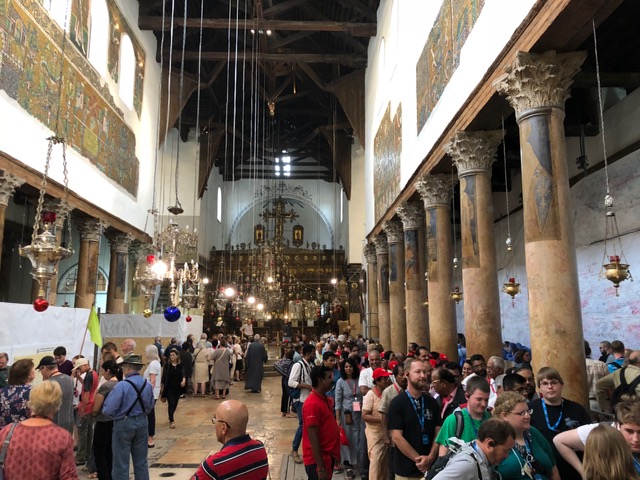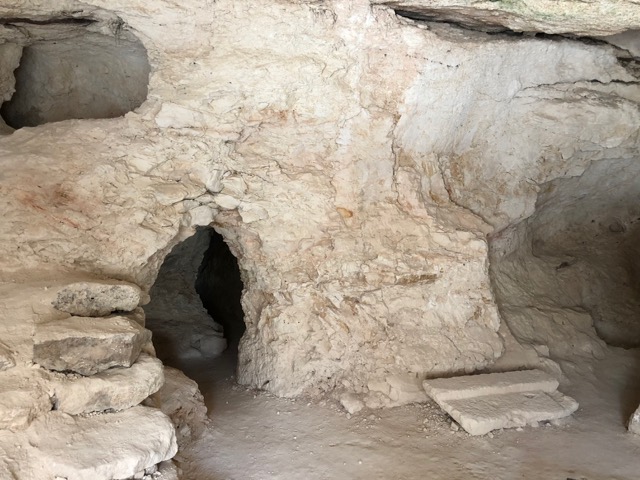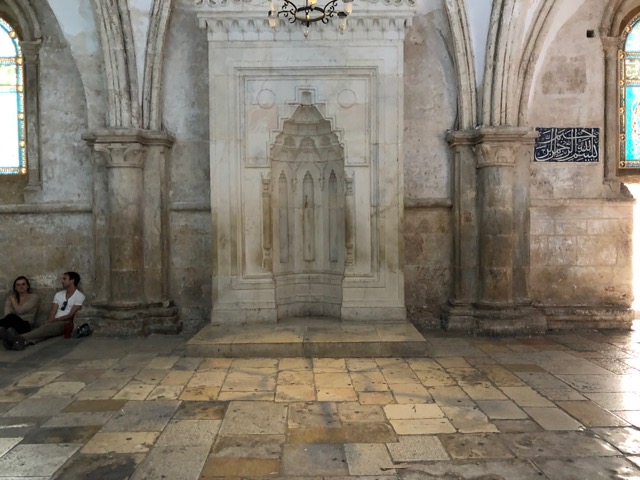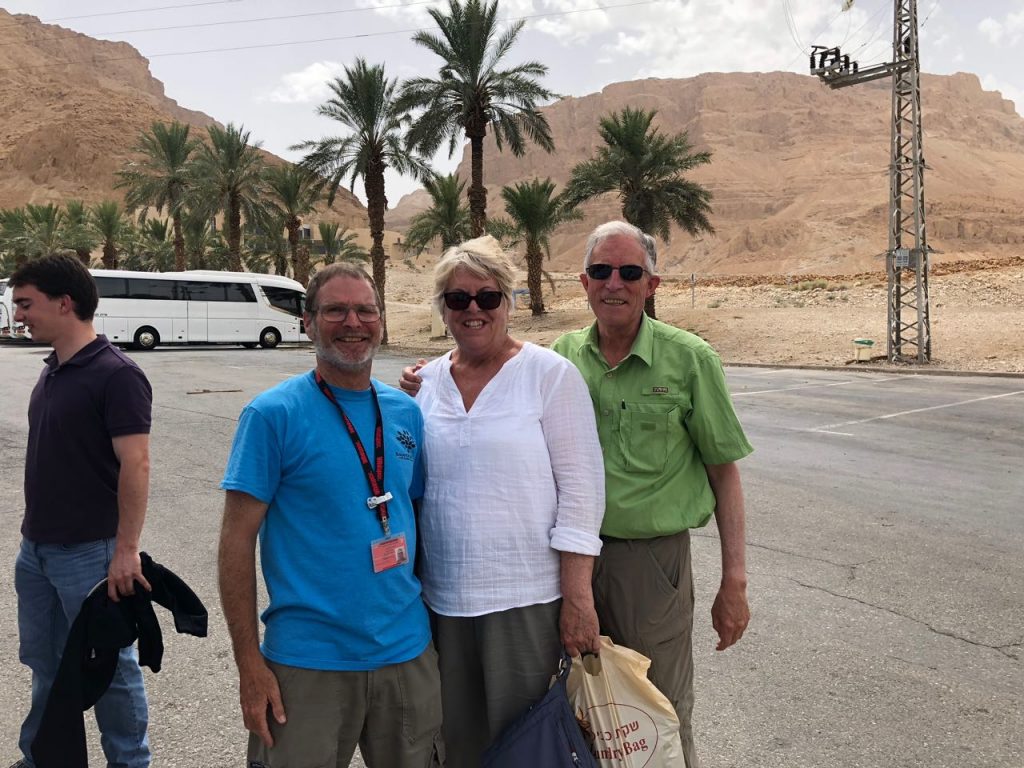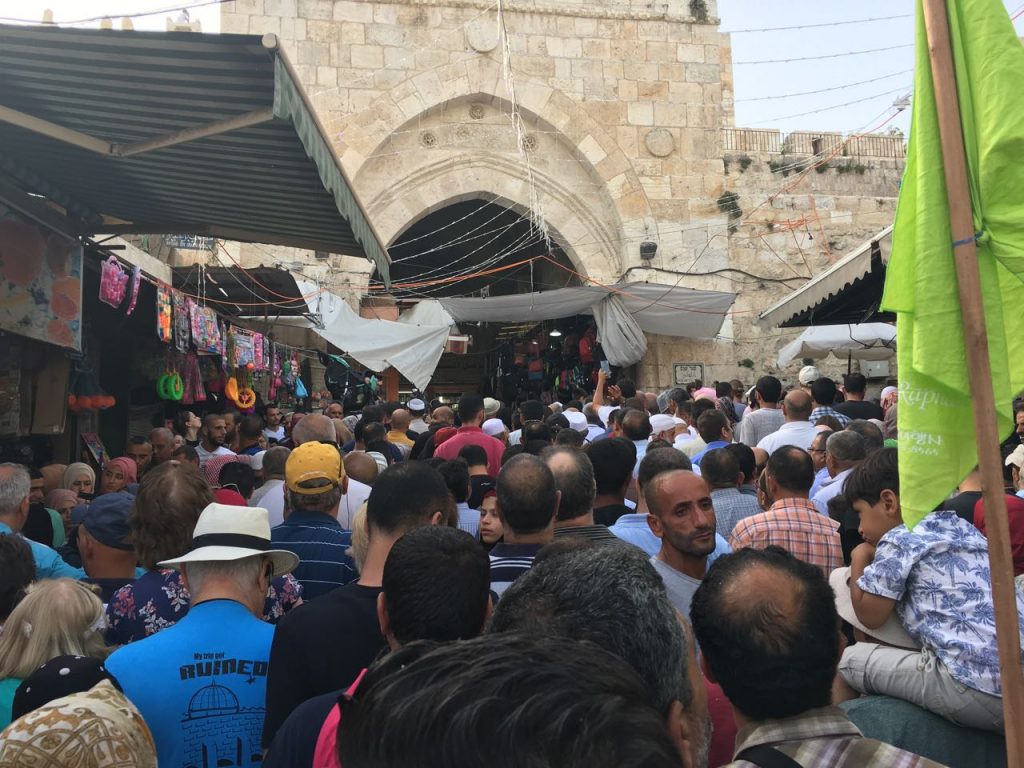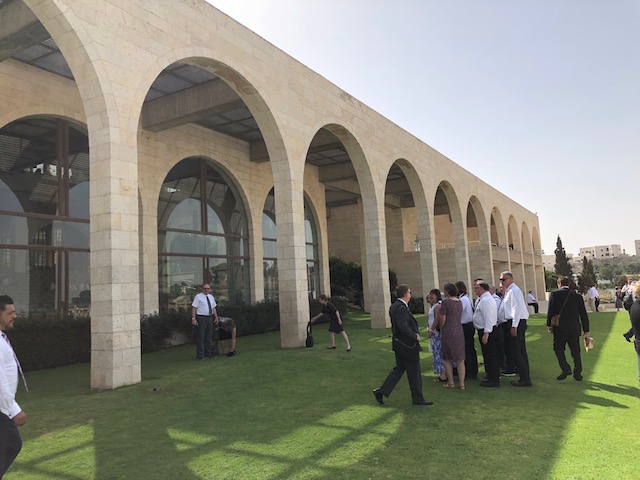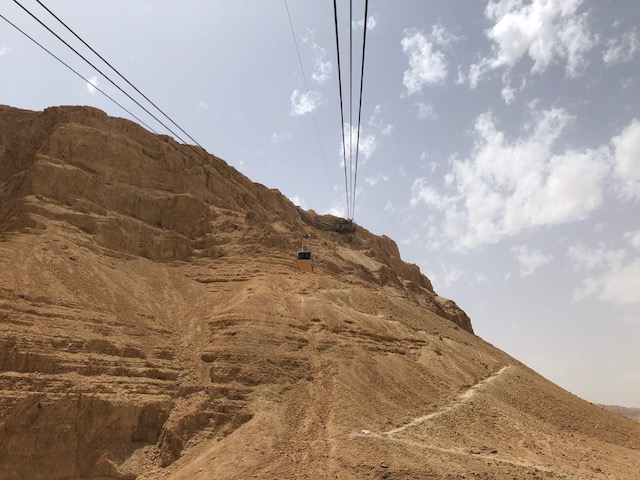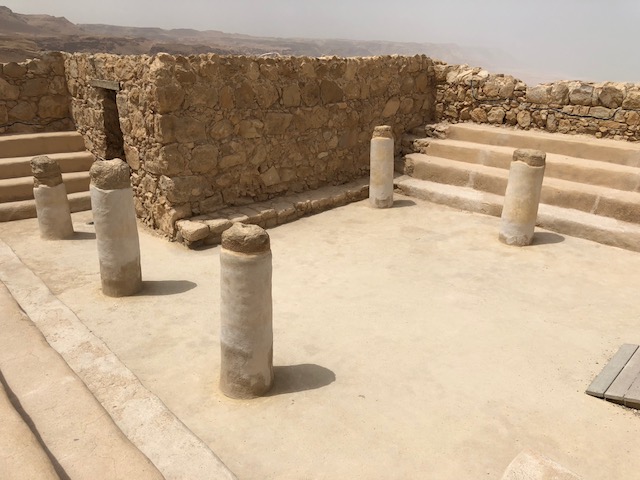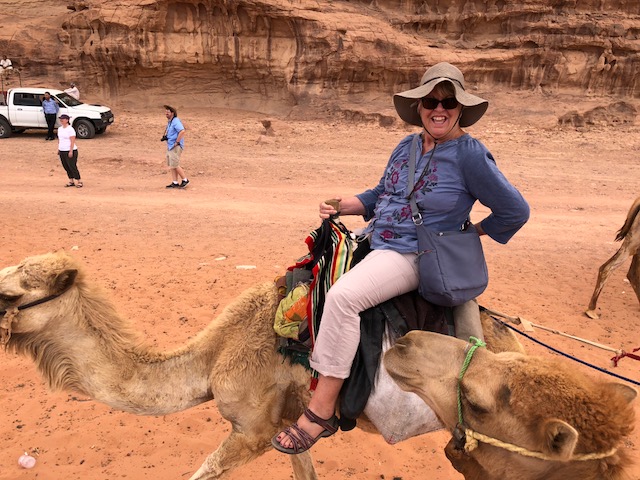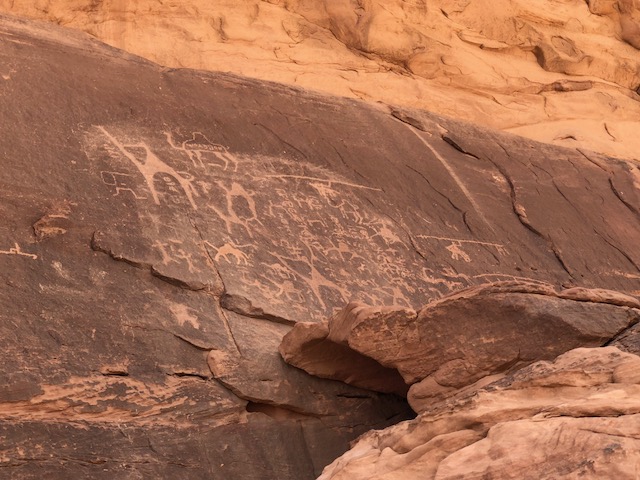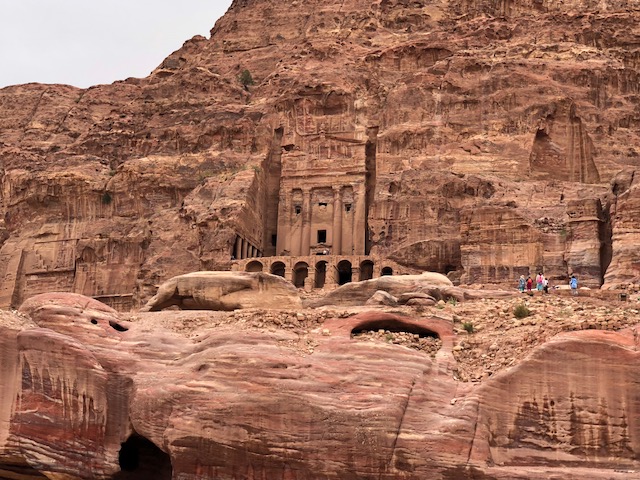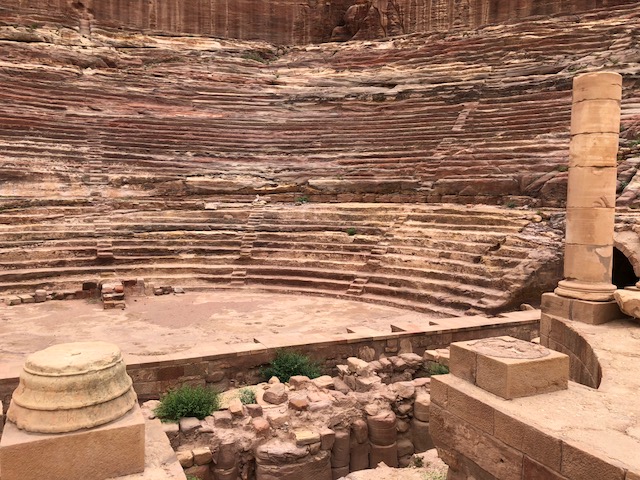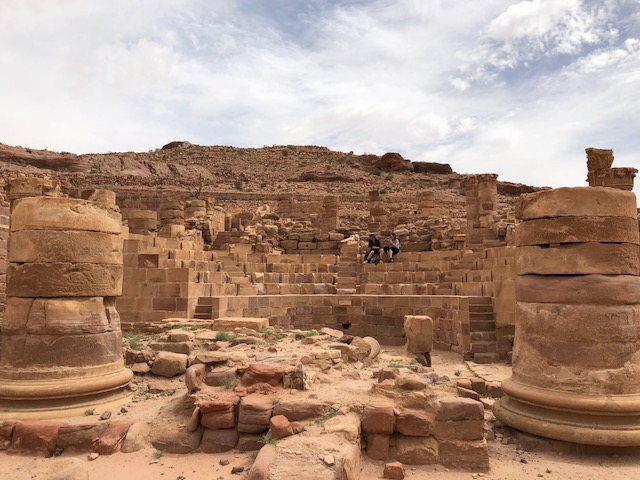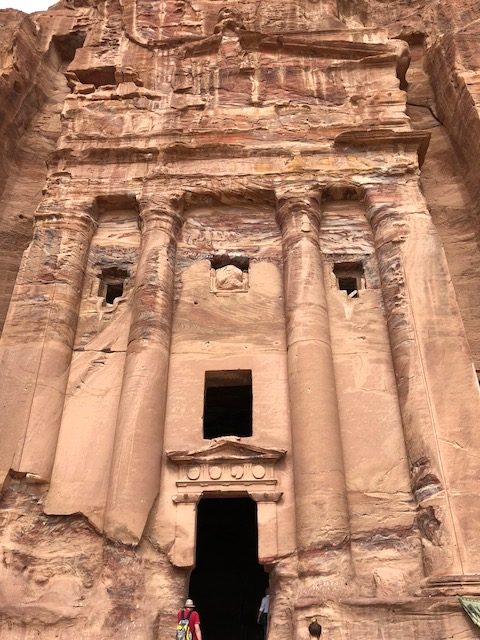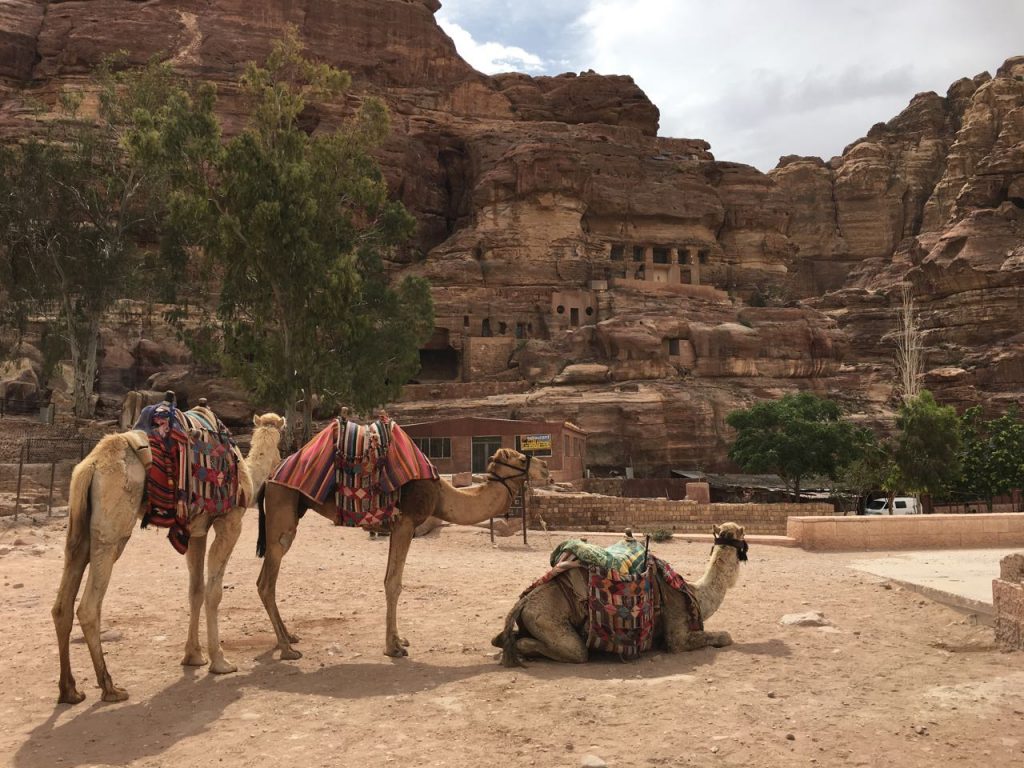Mom and I just finished a very enjoyable trip to Israel and Jordan, on a tour organized by Bountiful Travel of Utah, with tour director David Hadlock and assisted by John Bytheway (a well-known author and speaker). Here are some photos, with descriptive captions.
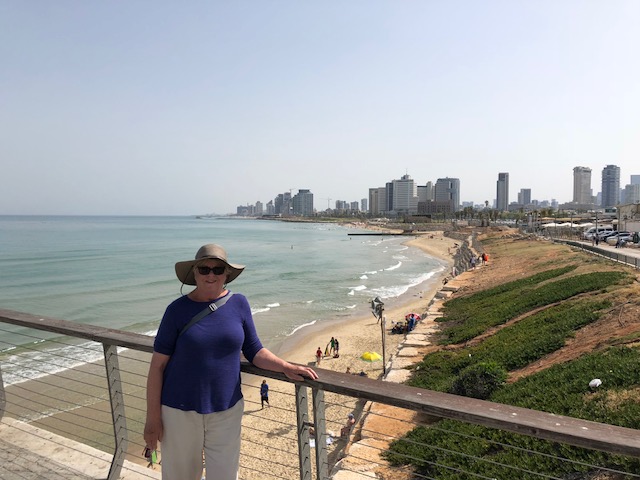
Here is Mom with Tel Aviv in the background. Tel Aviv has a major university and attracts many tourists to its long, sunny beaches.
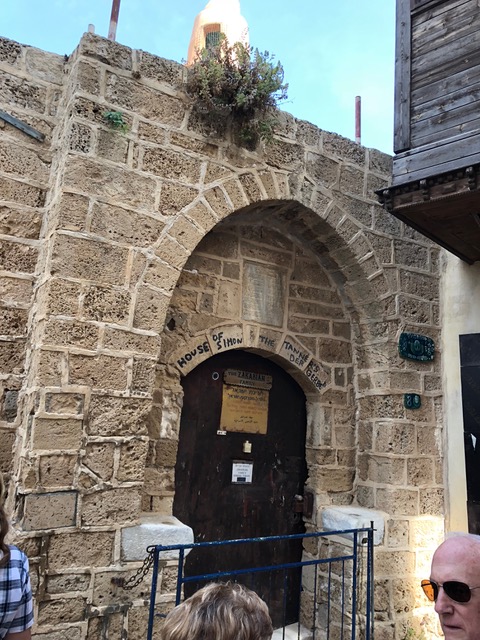
This is near the home of Simon the Tanner, mentioned in Acts 9 and 10, in Joppa (now known as Yafo, near downtown Tel Aviv).
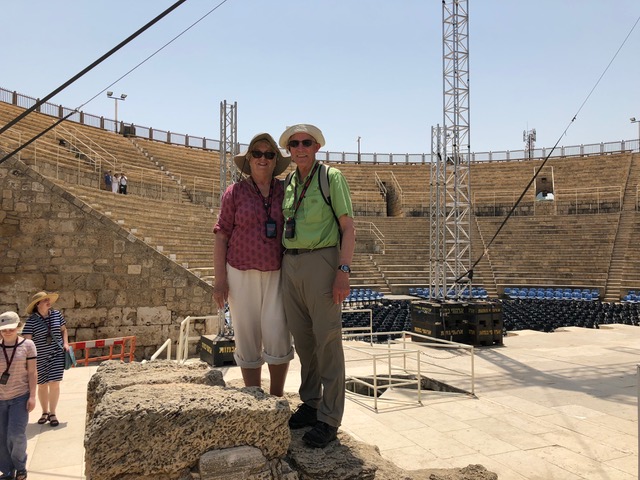
This is the Roman theater at Caesarea maritime, the large port/palace complex built on the coast north of Tel Aviv by Herod the Great.
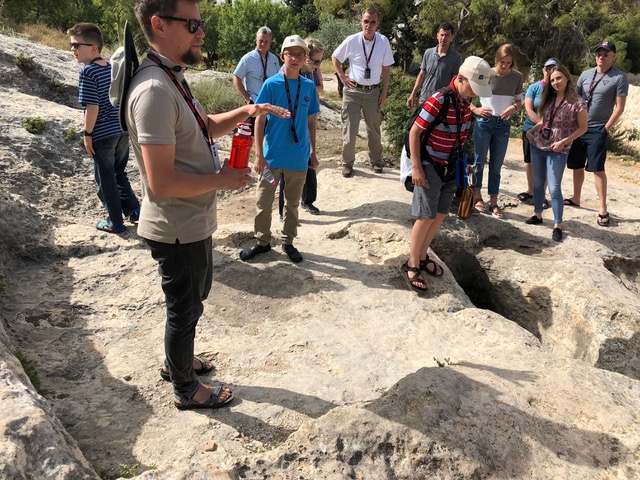
Here is a 1st century wine press site in Nazareth. Note the notch in the ground (near the foot of the fellow with the white hat), which allows the wine to fall into the hole.
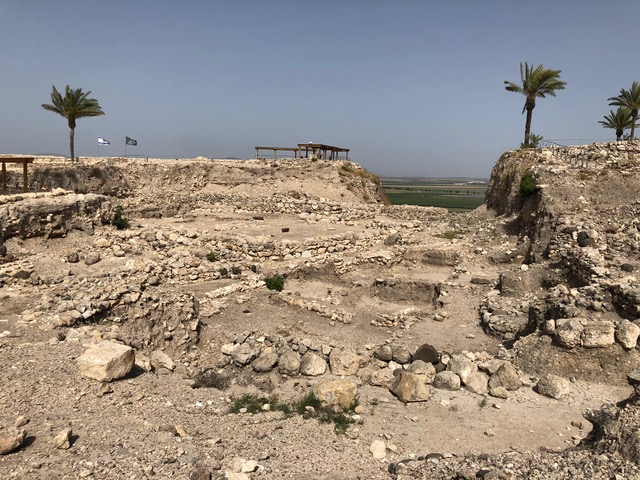
This is Armegeddon, actually the Tel Mediggo archaeological site. There are 26 different layers of civilization here, spanning 4000+ years, all prior to 586 BC, when the Jews were carried off to Babylon, after which the site was never occupied again.
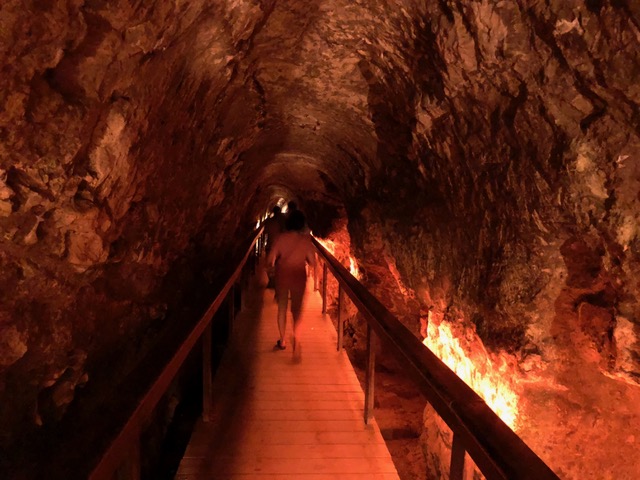
You may have heard of Hezekiah’s tunnel, which was built underground in Jerusalem to provide running water in case of a siege. This is a similar tunnel at Tel Mediggo, which was constructed by King Ahab about 850 BC.
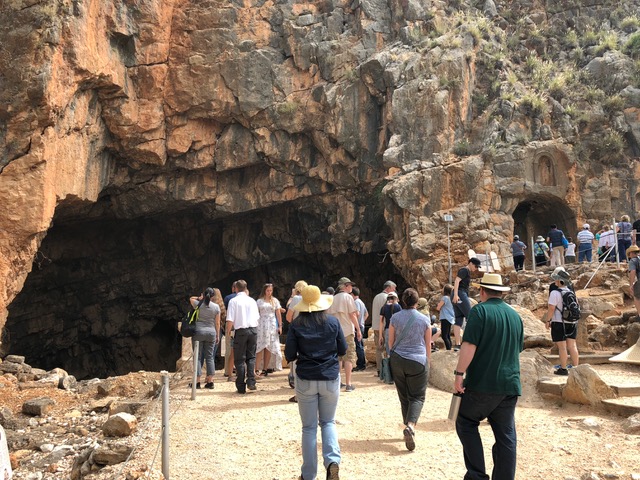
Here are the remains of a Roman cult temple at Caesarea Philippi, which is near the far northern point of Israel. It was mentioned in Mark 8:27-33 and Matt. 16:13-23.
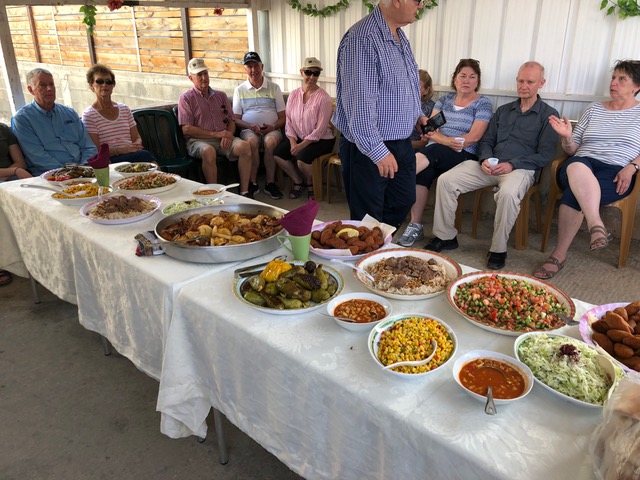
While most of our meals were in hotels, this night we enjoyed a delicious spread of local cuisine, served up at the home of our bus driver.
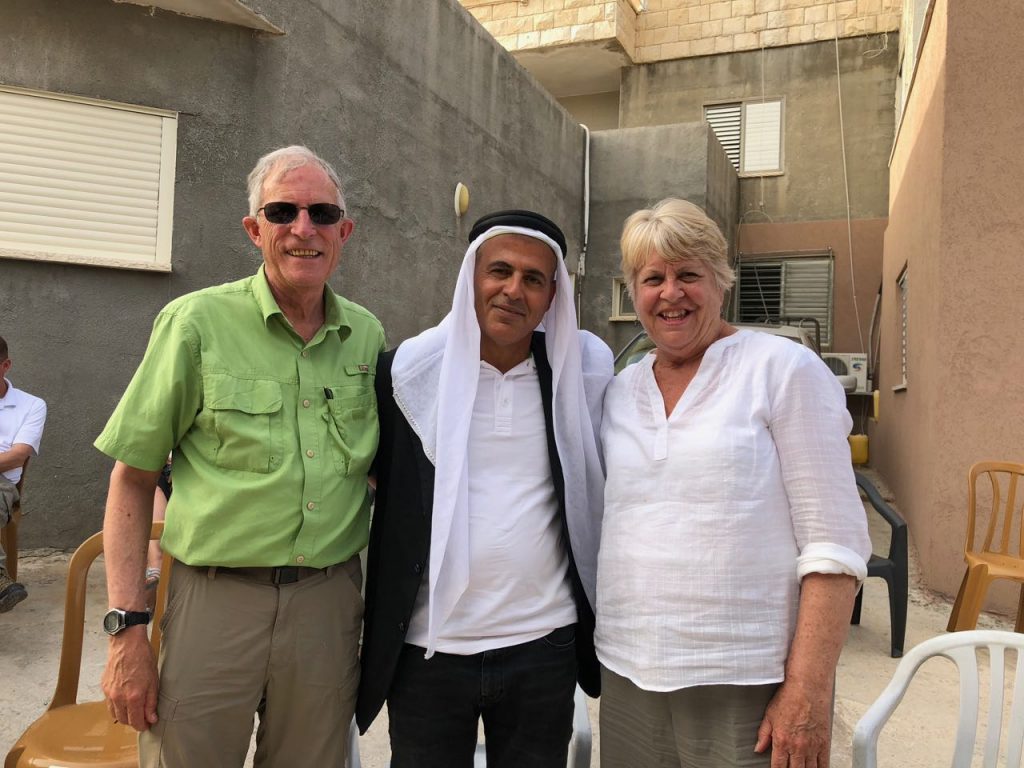
Here is our bus driver. When is not driving buses, he is the Bedouin Sheik of about 8000 persons in the Nazareth area.
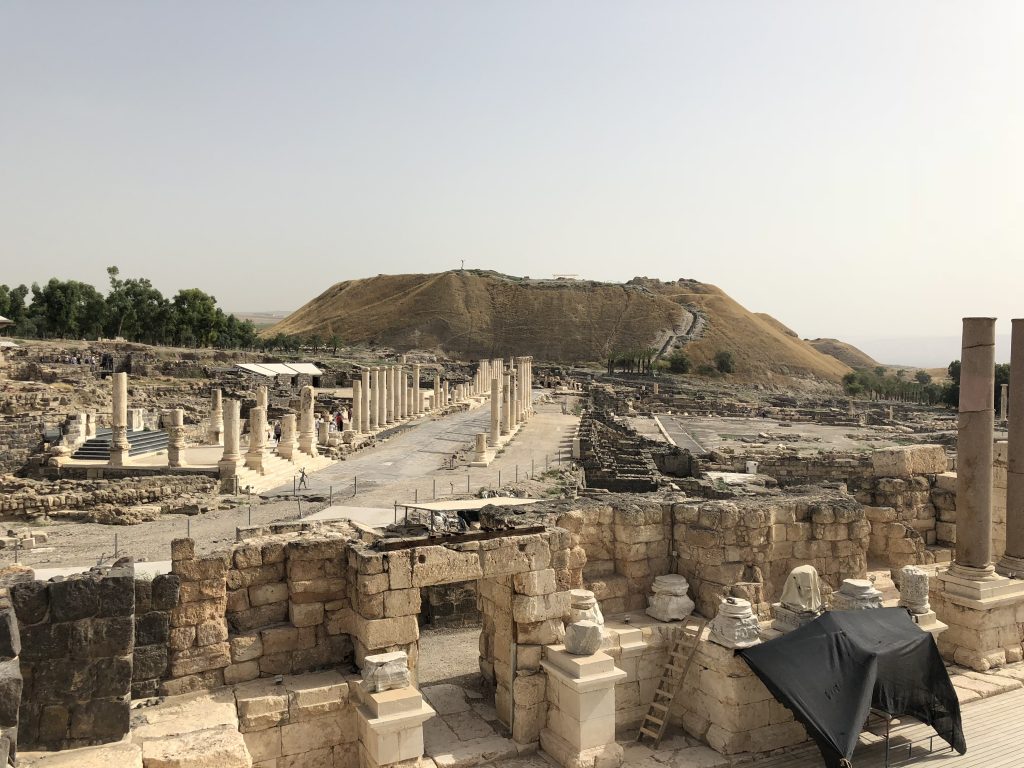
This is Bet She’An, one of the largest Greek-Roman settlements during Old Testament times. I hiked to the top of the hill, where there are even more ruins.
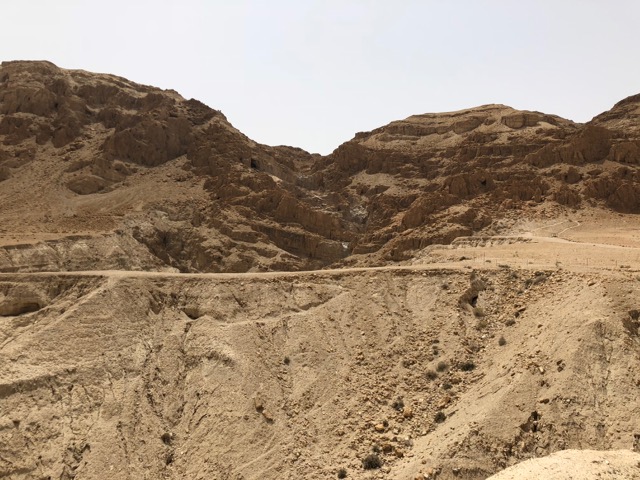
This is the Qumran site, near the north end of the Dead Sea. The Dead Sea scrolls were found in caves in the hills above.
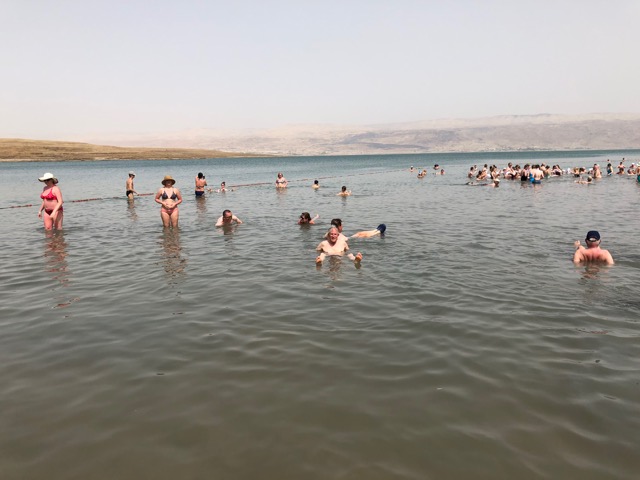
One can float in the Dead Sea, which is the lowest point on Earth, roughly 1340 feet below sea level.
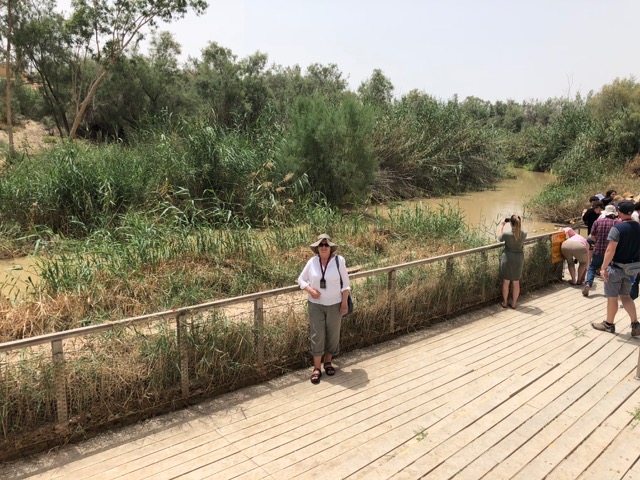
This is the Jordan River, at a site reputed to be near where Jesus was baptized by John the Baptist.
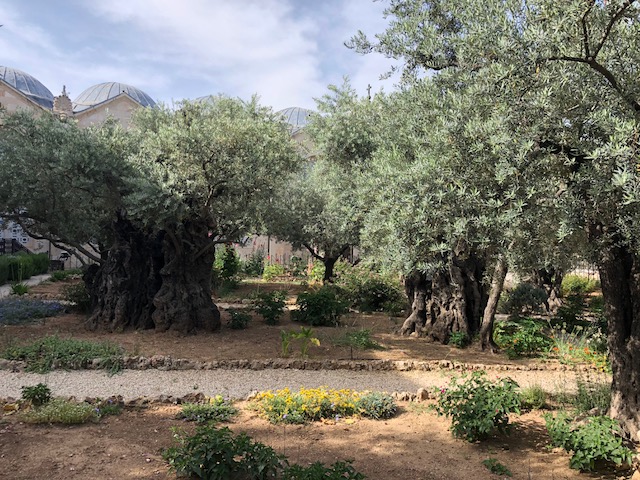
This is the Garden of Gethsemane. Note the large gnarly olive trees, which may be roughly as old as the time of Jesus.
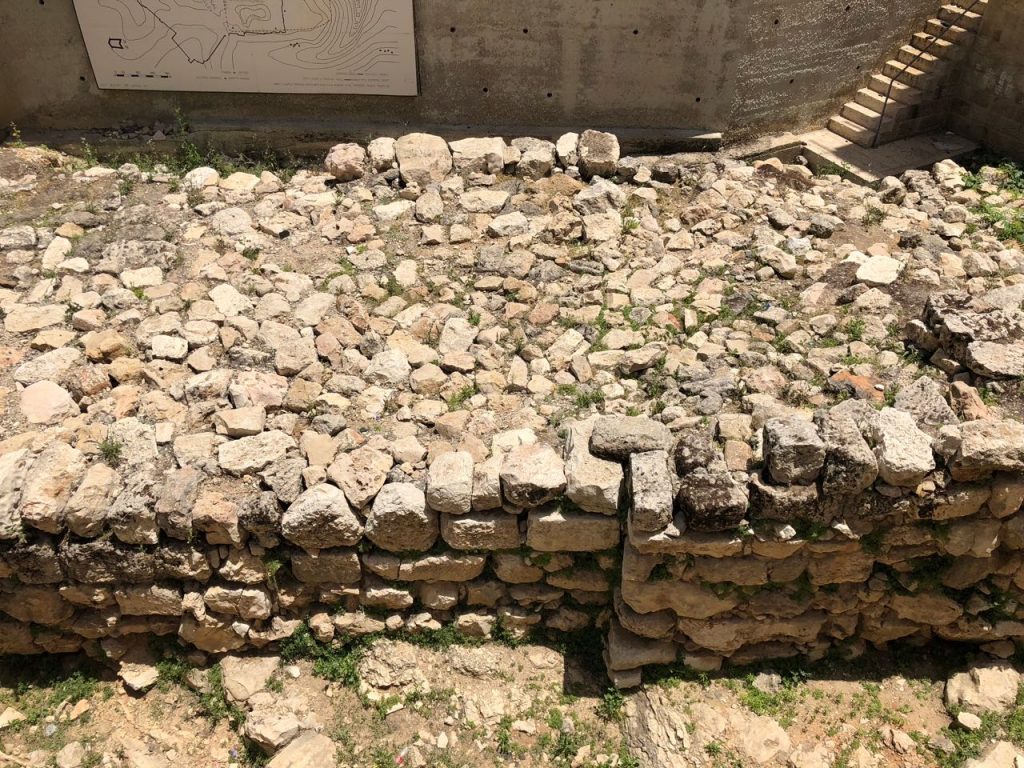
This is a recently discovered foundations of what may be the original wall of the first temple before the Babylonian captivity.
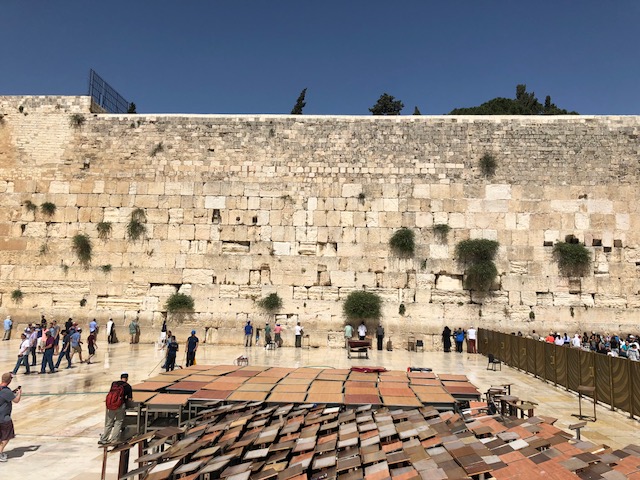
This is the Western Wall (“Wailing Wall”) in Jerusalem, a remnant of the second temple built by Herod the Great.
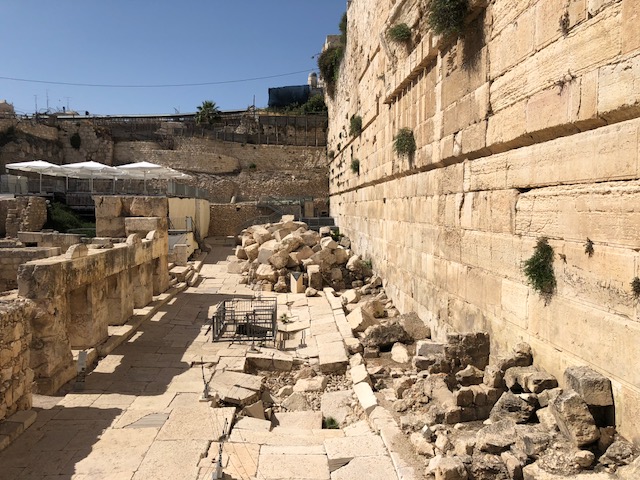
These stones, at the base of the western wall, may be remnants of the temple proper, after it was torn down by the Romans in 70 AD.
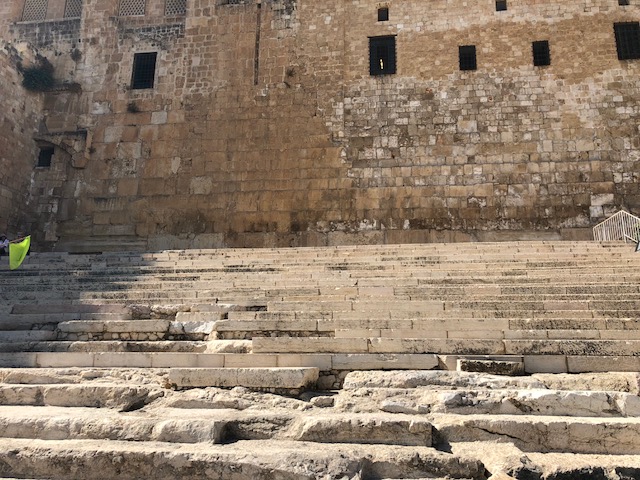
These steps, approaching the southeastern wall of Jerusalem, likely were used by Jesus and others mentioned in the New Testament.
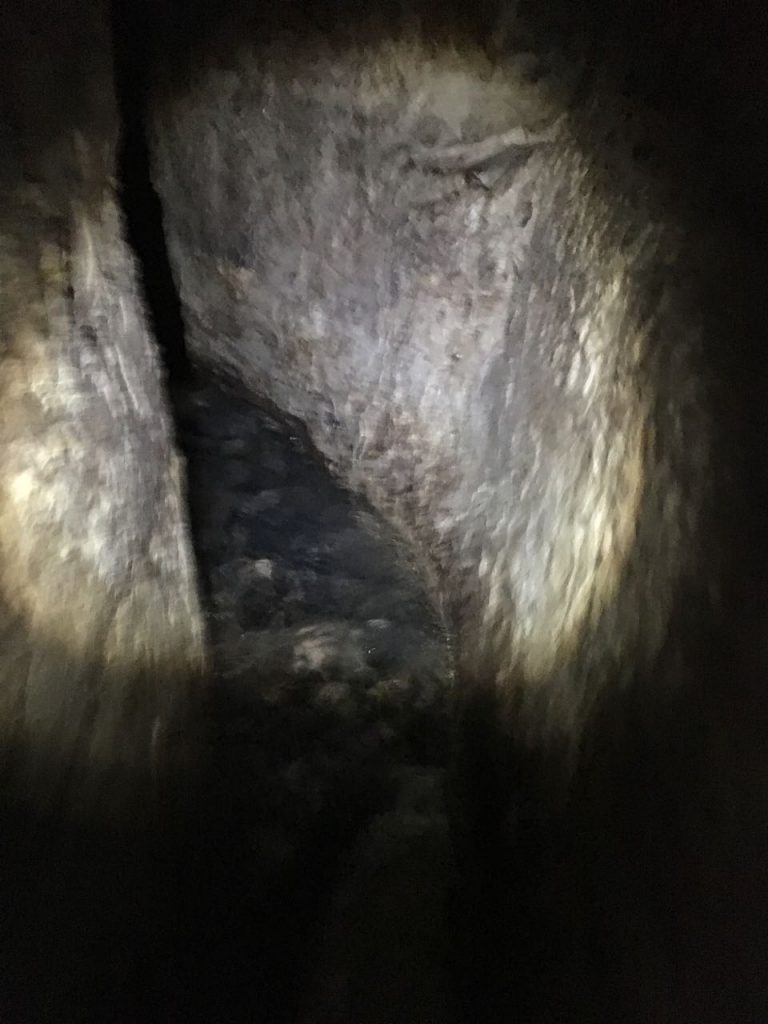
We walked through Hezekiah’s tunnel, which was constructed or at least expanded during the reign of King Hezekiah to withstand Sennecherib’s siege (2 Kings 20:20).
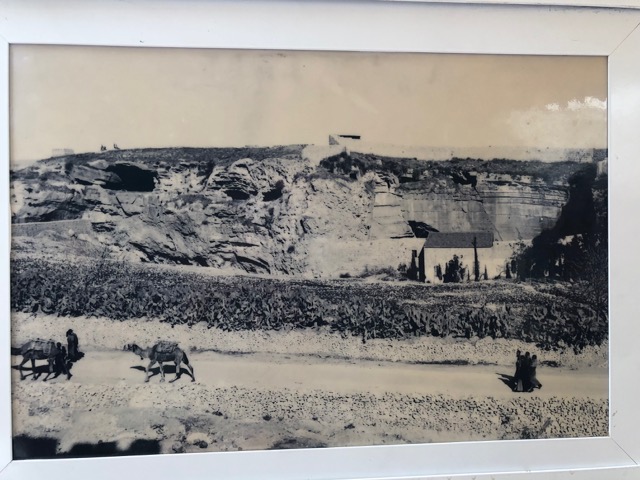
This is a 100-year-old photo of a site we visited that is thought by some to be the site “Golgotha” (place of a skull), where Jesus was crucified. Note the two “eyes” just left of center. The feature is not as clear today, due to some damage.
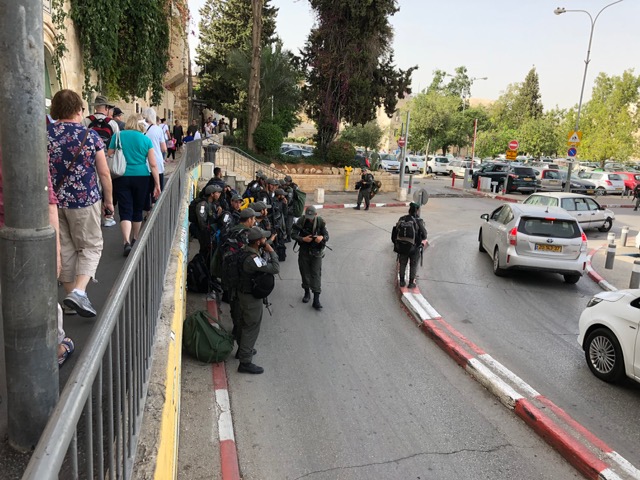
The Israeli military is a common sight in Jerusalem and elsewhere in Israel. All youth 18-20 years old must serve.
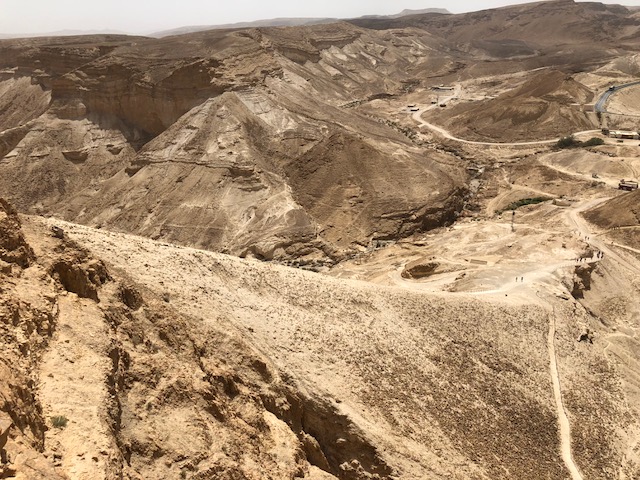
This is the famous “ramp” constructed by the Romans to permit their war machines and soldiers to breach the wall and conquer Masada.
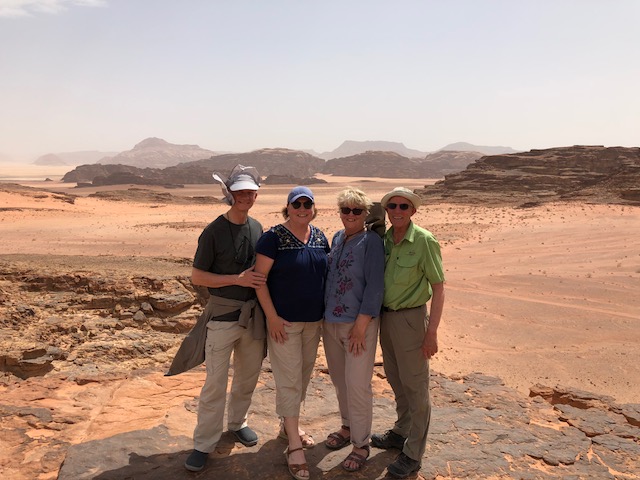
This is Michael and Kim Miller, with Linda and myself, at the Wadi Run, northeast of Aqaba, Jordan. This particular spot was used in the movie “The Martian”.
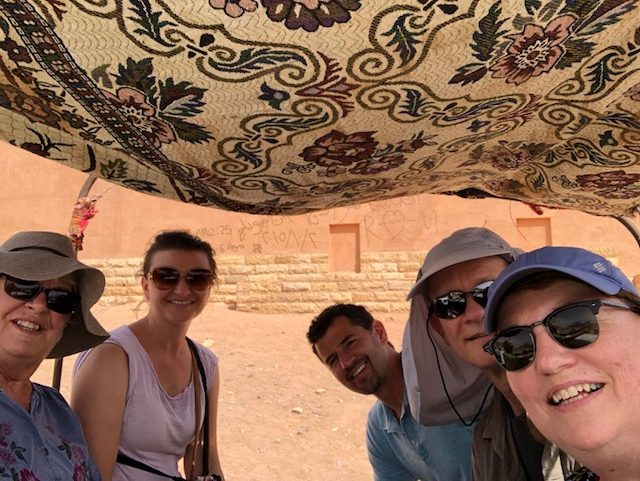
This is Linda, Taylor McAvoy, Joe McAvoy, Mike Miller and Kim Miller, as we head off on the Wadi Rum desert on the back of a Toyota truck.
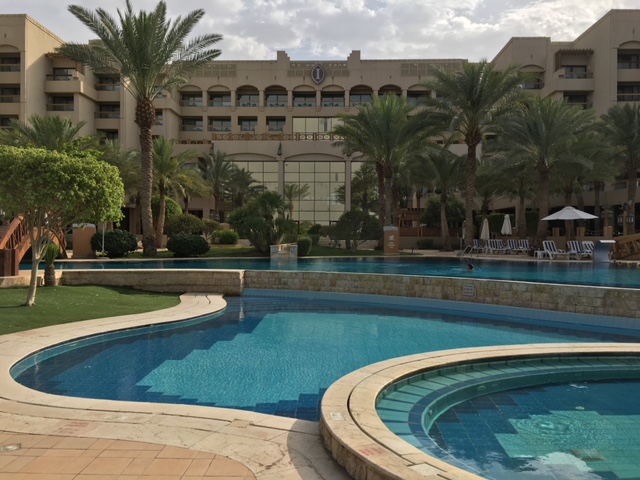
We stayed at this hotel in Aqaba, Jordan, on the shore of the Red Sea. The food here, as with the other hotels, was spectacularly good.
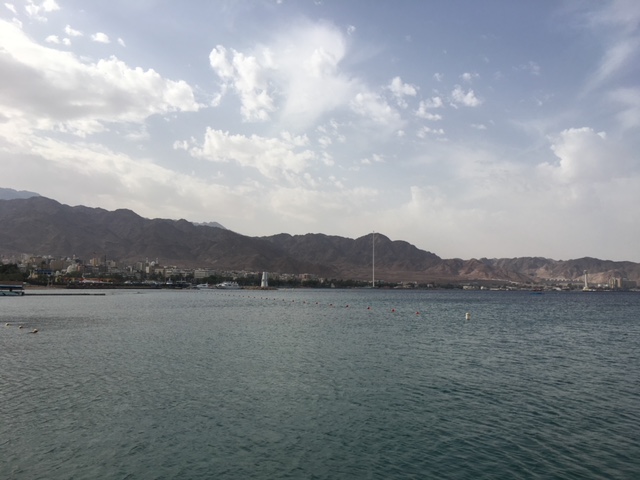
This is the Red Sea from our hotel, looking out to Aqaba (Jordan), and, further to the right, Saudi Arabia. Looking the other way one can see Israel and also Egypt — all four nations are within a few miles of each other here.
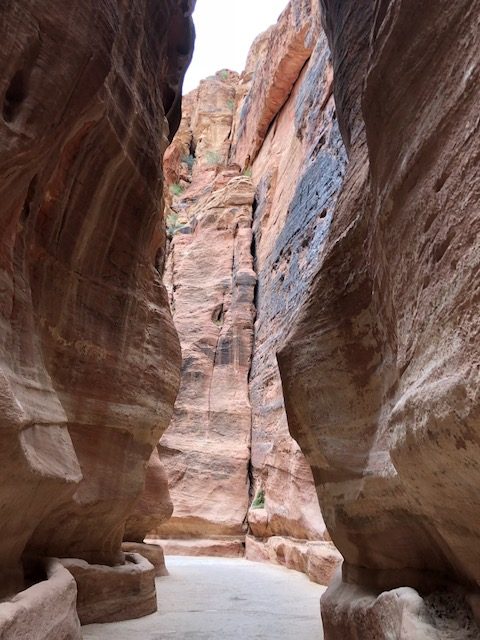
This is the “slot canyon” leading to Petra, a truly remarkable archaeological site. With a history stretching back to 9000 BC, most of the ruins visible today were constructed by the Nabateans, a sophisticated but shadowy nomadic people who lived in Petra from about 300 BC through 300 AD, after which the site was abandoned, and lost to the western world until 1812.
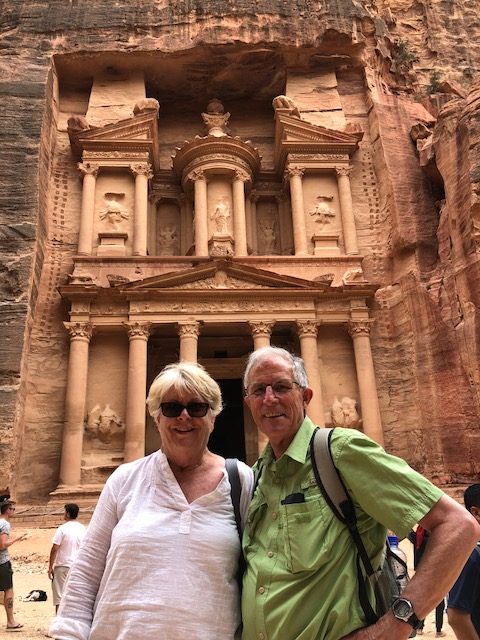
Here are Linda and David in front of the “Treasury”, made famous as a backdrop for the movie Indiana Jones and the Last Crusade.
